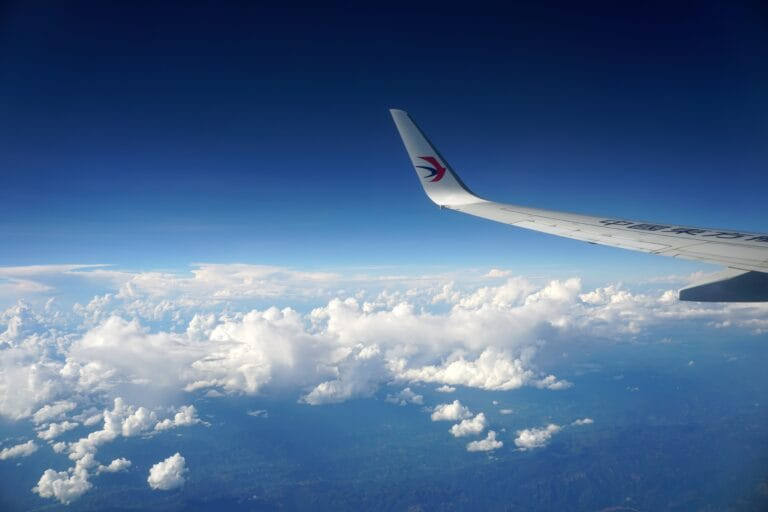- China Eastern’s move to restore and expand Shanghai–Delhi wide-body services helps correct a prolonged supply imbalance, reducing reliance on third-country hubs and improving reliability for high-value, time-critical cargo.
- Direct uplift provides immediate advantages for e-commerce and electronics supply chains, restoring scale, shortening line-haul distances and stabilising just-in-time component flows.
- The decision reflects a measured easing of bilateral aviation restrictions and supports India’s long-term airfreight growth ambitions, despite ongoing constraints from geopolitical dynamics, airport congestion and regulatory complexity.
China Eastern Airlines’ decision to resume and expand scheduled services to India, increasing frequencies on the Shanghai Pudong–Delhi route from three to five weekly flights from January 2026, marks a meaningful development for regional air logistics. The move ends a five-year break shaped by pandemic restrictions, limits on bilateral aviation rights and diplomatic tension, and signals a gradual return to operational normality between two of Asia’s most influential trading partners. For the air cargo sector, which has faced a prolonged supply imbalance on the China–India lane, the reinstatement of wide-body capacity represents a shift in market structure and trade facilitation.
The airline will deploy Airbus A330 aircraft, restoring significant belly-hold provision on a corridor where demand for high-value and time-critical goods has consistently exceeded direct capacity. Operating five days a week, the service forms part of what China Eastern describes as a broader multi-city engagement strategy in India, suggesting the possibility of further expansion if conditions stabilise.
Trade flows reinforce the strategic weight of the route. Bilateral trade reached about US$136 billion in FY2024, with India importing high-value commodities from China including electronics, industrial machinery, pharmaceutical intermediates and consumer products. Yet direct air connectivity has lagged since 2020, prompting cargo to move through third-country hubs such as Hong Kong, Bangkok, Dubai and Singapore. This added cost and time variability while limiting flexibility for express and small-parcel operators. Market data over 2023–24 indicates that yields on the corridor were around 18 to 25 percent higher than pre-pandemic norms due to restricted supply. The reintroduction of wide-body services therefore helps correct a structural under-capacity that has influenced Indian supply chains for several years.
Immediate gains in speed and reliability
e-commerce is positioned to gain the most immediate benefit from restored direct connectivity. IATA estimates that e-commerce already accounts for about 20 percent of global air cargo volumes, with expectations of around 30 percent by 2027. India, projected to generate about US$160 billion in e-commerce gross merchandise value by 2026, relies heavily on Chinese fulfilment hubs for small parcels covering consumer electronics, accessories and lifestyle goods.
The return of direct Shanghai–Delhi uplift shortens line-haul distances from major Chinese manufacturing clusters such as Guangdong, Zhejiang and Jiangsu to Indian consumer markets. The A330 aircraft provides around 15 to 20 tonnes of belly capacity per flight, re-establishing scale lost when carriers were forced to rely on narrow-body deployments or routing through intermediate hubs.
Reducing the need for trans-shipment also cuts customs complexity, lowers exposure to cost volatility and improves reliability during peak shopping events such as major festive-season promotions and flash sales.
The predictability created by a stable wide-body schedule is especially valuable for express operators and cross-border logistics providers, which depend on consistent transit times to maintain service guarantees. The change enables more resilient micro-parcel and B2B fulfilment networks across India, strengthening the corridor’s role in supporting consumer-driven import flows. For China Eastern, the increased frequency reinforces its strategic re-entry into one of the world’s fastest-expanding consumption markets. For Indian logistics stakeholders, it restores a dependable platform for time-sensitive cargo.
Electronics and components
India’s electronics and high-technology manufacturing base remains structurally dependent on Chinese inputs. Between 60 and 70 percent of components used in Indian smartphone production originate in China, with electronic component imports valued at about US$27 billion in FY2024. More than a third of this travels by air because of the high value-to-weight profile of semiconductors, chipsets, PCBs and testing equipment.
Between 2020 and 2023, reduced direct capacity and reliance on multi-stop routings exposed supply chain vulnerabilities. Delays in component shipments frequently disrupted assembly schedules for manufacturers operating on just-in-time production models. The restoration of direct wide-body lift therefore plays a stabilising role at a time when India is promoting domestic electronics and semiconductor manufacturing under production-linked incentive frameworks.
The larger belly-hold capacity of the A330 provides the necessary space for dense, high-value cargo and reduces dependence on indirect routes that add cost and transit uncertainty. Shorter and more consistent lead times also improve synchronisation between Chinese production cycles and Indian assembly lines, reducing inventory risk and improving planning reliability.
This resumption occurs alongside a measured easing in civil aviation policy. India had previously restricted Chinese carriers to a small fraction of pre-2020 capacity. The increase to five weekly flights marks the first easing of limits in several years and is expected to prompt renewed discussion on freighter traffic rights, which remain suspended. China Eastern has also signalled potential interest in expanding connectivity to Mumbai, Bengaluru or Chennai, all of which are major cargo centres.
The development aligns with India’s national objective of increasing its air cargo throughput from 3.3 million tonnes to 10 million tonnes by 2030. Strengthening direct uplift from China enhances India’s prospects as a regional distribution hub, supports integrator operations and complements ongoing investments in multimodal freight corridors and inland production zones.
However, several constraints continue to influence planning. Geopolitical volatility may affect aviation policy, market access for Indian carriers remains limited relative to Chinese operators, and peak-hour congestion and customs processes at major Indian airports continue to challenge throughput. Tariff policies and evolving export controls may also shape route economics.
Industry sentiment is cautiously optimistic. Stakeholders view the restored wide-body capacity as essential for balancing supply and demand but emphasise that long-term stability will depend on clear, reciprocal aviation policy frameworks. Nevertheless, China Eastern’s expanded services represent a significant step towards rebalancing a strategically important air corridor. If supported by predictable regulation and continued infrastructure improvement, the China–India airfreight lane could re-emerge as one of the region’s strongest growth routes, reinforcing trade interdependence and supporting industrial expansion across both markets.




